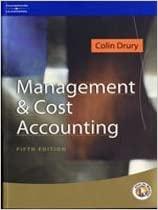Question
One of your clients has emailed your firm with several queries. Draft a business letter in reply and make sure you reference any relevant sources
One of your clients has emailed your firm with several queries. Draft a business letter in reply and make sure you reference any relevant sources relating to your advice, for example, AASBs, Corporations Act, and relevant websites. See the email below.
Moon Ltd acquired 100% of the issued shares of Sun Ltd for $240,000 (Sun Ltd.'s owner's equity at the time of purchasing was $300,000 made up of share capital of $240,000 and retained earnings of $60000). One of the liabilities of Sun Ltd was $54,000 for the dividend payable but not yet paid, and our accountant informed me that the shares were acquired based on Ex-dividend. In addition, one of the areas of discussion during the negotiation process was the current court case that Sun Ltd was involved in. No monetary amount was disclosed, but the company's lawyers had placed a $18000 amount on the probable payout to settle the case.
Having prepared the acquisition analysis as part of preparing the consolidated financial statements for Moon Ltd, can you explain how the unrecorded contingent liability of $18,000 by the subsidiary Sun Ltd affects the group's goodwill? I believe the goodwill for Moon Ltd should be $60,000 (being $240,000 less $300,000). Is this correct?
In addition, will the dividend payable by the subsidiary entity Sun Ltd impact the acquisition analysis? Please explain?
The accountant told me that she had eliminated transactions incurred between the companies Moon Ltd and Sun Ltd. The sales are legitimate, we have exchanged invoices and contracts, so can you explain why we need to eliminate the inter-company transactions? I have extracted two examples below. Would you please examine the following transactions for errors? If incorrect, explain why and provide me with the corrected journal entries.
1. At the beginning of the current period, Moon Ltd sold Equipment to its wholly-owned subsidiary, Sun Ltd, for $960,000. Moon Ltd had initially paid $2,400,000 for this asset, and at the time of sale to Sun, Ltd had charged depreciation of $1,800,000. This asset is used differently in Sun Ltd from how it was used in Moon Ltd; thus, whereas Moon Ltd used a 15% p.a. straight-line depreciation method, Sun Ltd uses a 25% straight-line depreciation method. In calculating the
Page 2 Kaplan Business School Assessment Outline depreciation expense for the consolidated group, the group accountant is unsure which depreciation rate should be applied and which depreciation rate to use.
2. On 1 October 2021, Sun Ltd sold inventory for $75,000 to Moon Ltd at cost plus 25%. On 30 June 2022, Moon Ltd sold two-thirds of the inventory to other entities for $25,000 but still holds one-third of these inventories as of 30 June 2022. Can we debit Sales for $150,000, credit the Cost of Sales for $75,000 on 30 June 2022? the company needs anything else?
Step by Step Solution
There are 3 Steps involved in it
Step: 1

Get Instant Access to Expert-Tailored Solutions
See step-by-step solutions with expert insights and AI powered tools for academic success
Step: 2

Step: 3

Ace Your Homework with AI
Get the answers you need in no time with our AI-driven, step-by-step assistance
Get Started


